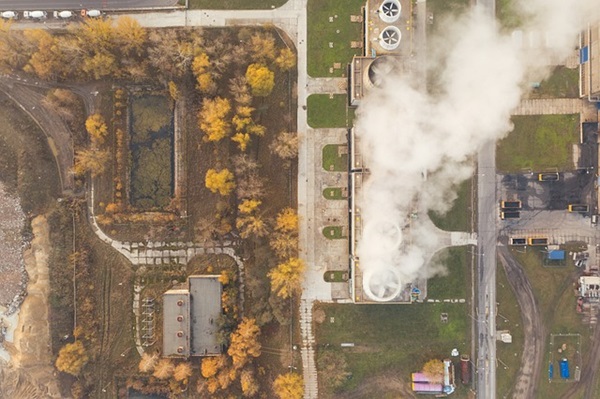
On Tuesday 6 February 2024, the European Commission published its communication entitled “Securing our future – Europe's 2040 climate target and path to climate neutrality by 2050 building a sustainable, just and prosperous society”.
With this communication, the Commission presented its recommendations regarding the European Union's greenhouse gas emissions reduction target for 2040.
Based on the objective of a net reduction in emissions of at least 55% by 2030 (compared to 1990), set by the “European Climate Law” and aiming to achieve climate neutrality by 2050 at the latest, also enshrined in the "European Climate Law", the Commission recommended a net reduction in greenhouse gas emissions of 90% by 2040 by compared to 1990 levels. This is a domestic objective, to be achieved by the European Union on its own territory, without recourse to external credits.
The communication is based on the opinion of the European Scientific Advisory Board on Climate Change and is accompanied by a detailed impact analysis of more than 600 pages.
Implementation of the new objective
The Commission's communication highlighted that all the main sectors emitting greenhouse gases will have to contribute to reduction efforts. In particular, fossil energy consumption is expected to decrease by around 80% by 2040 compared to 2021. According to the Commission, carbon capture through industrial carbon absorption should be deployed earlier, in addition to terrestrial absorptions sequestering carbon in biomass and soils.
In addition to the numerous co-benefits of climate action, whether in terms of air quality, health or even job creation, setting an ambitious reduction target for 2040 will provide the necessary predictability, Luxembourg’s Ministry of the Environment, Climate and Biodiversity noted. The new regulation will likely lead citizens, businesses and public authorities to make investment decisions now and make political choices to prepare for the transition to climate neutrality.
According to the Commission, transformations at the sectoral level will need to be based on an appropriate action framework, consisting of an adequate set of incentives, pricing mechanisms and a favourable environment to facilitate private and public investments. The Commission estimates that an additional share of 1.5% of GDP compared to the decade 2011 to 2020 should be invested each year in the transition. Additionally, significant mobilisation of the private sector will be “essential” to this end, the Commission stressed, emphasising that the cost of inaction, borne by our economies, would be much higher.
Likewise, the Commission specified that a successful transition will require ensuring the competitiveness of European industry, in particular through fair conditions of competition with international partners, and ensuring that fairness, solidarity and policies social remain at the heart of the transition, which must be a just transition.
Global and national context
In Dubai, in December 2023, based on the first “global stocktake”, the driving force behind the Paris Agreement, the international community highlighted the urgent need to reduce greenhouse gas emissions and endorsed the objective of limiting global warming to 1.5° Celsius compared to the pre-industrial era. Based on the scientific recommendations of the Intergovernmental Panel on Climate Change (IPCC) to reduce greenhouse gas emissions by 43% by 2030 (reference 2019), by 60% by 2040 and to achieve carbon neutrality by 2050, the agreement signalled the need to abandon fossil fuels.
The EU's energy and climate goals for 2030, including Luxembourg's plans as reflected in the draft of the integrated national energy and climate plan (PNEC), match the ambition set in Dubai. However, decarbonisation efforts must speed up after 2030 to achieve climate neutrality by 2050. The new European Union objective for 2040 proposed by the Commission is part of this path. At the national level, the projections of greenhouse gas emissions and absorptions established as part of the development of the draft PNEC indicate that Luxembourg would be able to reduce its net emissions by around 85% in 2040, compared to the 2005 level.
Continuation of work
The Commission's communication constitutes a basis for discussion for the Council and Parliament, as well as for all relevant stakeholders. Based on the reactions collected, it will be up to the future Commission (after the European elections) to put forward a legislative proposal for the 2040 objective (by including it in the "European climate law"), as well as to propose a legislative framework post-2030 to implement this objective. The ministry emphasised that “we are only at the beginning of the process of preparing the 2040 objective.”
The work programme under the Belgian Presidency of the EU Council will be as follows: from Monday 12 February 2024, technical meetings of the Council's environment working group will allow the Commission to present its communication (and impact assessments analyses) in detail and for Member States to ask the relevant questions. The file will appear on the agenda of the Environment Council in March (exchange of views) and June (orientation debate). The European Council will also be seized, probably to decide at the political level on the general level of ambition. At the same time, the European Parliament will analyse the matter.
The discussions over the coming months will not be limited to the figure of the reduction objective, but will also focus on the different fields of action and levers necessary (to be taken up by the future Commission in its legislative proposals) to achieve this level of ambitious reduction. This should be done without losing sight of the aspect of solidarity between Member States, the ministry stressed.
Finally, it will be up to the future Presidency of the Council to include the ambition retained in a new Nationally Determined Contribution (NDC) of the European Union to be submitted to the Secretariat of the United Nations Framework Convention on Climate Change (UNFCCC secretariat) in 2025.








